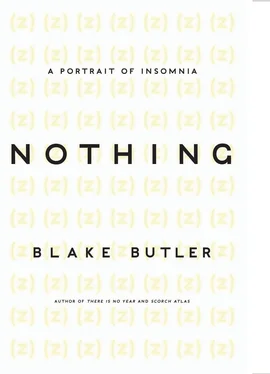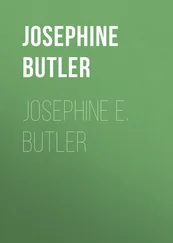In 1882, Nietzsche declares god dead: “God remains dead. And we have killed him. How shall we comfort ourselves, the murderers of all murderers?” The same year, U.S. Patent 268693 describes a “Device For Life In Buried Persons,” a periscope-style tube allowing the interred to breathe from underground and signal they are there to those above.
Around the turn into the twentieth century, we return to sleep’s cause being founded in ideological and spiritual ideas. Brown-Sequard and Heubel suggest that sleep is an inhibitory product, a space wherein the body cuts off its sensory stimulation, in the name of performing upkeep on the mechanisms of staying alert. Many minds, like Osborne, Gayet, and Mauthner, try to pinpoint to specific places inside the body responsible for the shift between sleeping and waking — Gayet pinpoints the brain stem; Mauthner notices the rapid movement of the eyes, but many don’t give credence to these findings — instead, we begin to tune in even nearer to our sleep-related behaviors. Mothers are advised of night-lights for fearful children, as well as taking care not to over-coddle every cry. Children are fenced in inside stationary cribs rather than cradles — new isolation.
Meanwhile, great advances are made in the awarenesses of new kinds of anesthesia, various — ologies pinpointing refined informational systems related to the body’s ways. We are more vigilant now than ever over bacteria. We wipe surfaces. We avoid. People start looking for answers to sleep disruption through new medicine, mainly centered around hypnotics: bromide, paraldehyde, sulfonal. We simultaneously acknowledge the vital healing aspects of sleep as a function, and the rising wave of stress. We get radio transmission and the magnetic tape recorder. We get methamphetamine. Around now pictures come in color, our replications that much more like us.
In 1898, we get the remote control, so we can stay in bed for longer and still see into rooms beyond the home. People sometimes press buttons they had not meant to press and see things they had not meant to see. Gelineau names “narcolepsy,” a relatively common condition wherein the body is overcome with sudden, extreme fatigue, often causing blackouts and public collapse. The name is based on two Greek words that mean “a benumbing” and “to overtake.” Another widespread condition, later termed sleep apnea, involves interruption to the sleeper by abnormal breathing interruptions, causing poor rest. The more aware we are of what is in us, the more difficult it might be, in ways, to disregard, and so therefore, to remain calm.
Entering the twentieth century, we get the tank, the bra, the vacuum cleaner, vitamins. We begin taking pictures of the brain. Death during childbirth is at an all-time low. We get machines that cool the air inside our homes and machines that burn our skin so we look healthy. William L. Murphy invents a bed that can fold into the wall so you can walk around where the bed would be usually during the day, a new concealing in the name of more frequent open air. We get sonar, cellophane, the neon lamp, and helicopters. At last the self-starting automobile is perfected. People no longer have to stand still for hours to become pictures: it is more instant. It will become more instant someday still. Harry Houdini, having hardly escaped alive from a magic trick of his own devising, says, “The weight of the earth is killing.”
Increasingly, doctors warn against the overstimulation of the child — the lingering attentions of the parent, the rising rigor of the public school system and extracurricular training, not to mention books and film. “The fundamental requirement,” we are advised, “is to keep the child free from over-fatigue every hour of the day.”117 In 1910, the Child Health Committee, supported by the Bureau of Education, institutes a standard of “13 hours of sleep for children 5–6, 12 for those 6–8, 11 for those 10–12, 10 1/2 for those 12–14, 10 for those 14–16, and still 9 1/2 up to 18.”118 Many experts argue about those numbers, some demanding less, some even more, the common denominator being that the child’s life schedule should be rigorous and in tune with the caretaking adult’s. More manuals beget more parental worry beget more attenuation to the child beget the child’s increasing attenuation to the self. Set regular bedtimes. Consult your doctor. Be wary, and prepared.
During World War I, “sleeping epidemics” in the form of encephalitis lethargica spread. In Africa, parasites with trembling membranes enter the flesh and multiply, infecting humans, horses, cows into a deep sleep from which they cannot be aroused. We are encouraged more often to recycle, feeding old shapes back into making new. There is more tangled air in all the speaking, eating, seeing by the hour. Houses grow to hold more artificial glow. Freud starts talking not only about what dreams mean, but how within them our limbs are paralyzed so as not to allow us to act them out. People are regularly X-rayed, photographed inside the body. We get automation and sound film. Each day there are new walls built, old ones torn down. Joseph Jules Dejerine says, “Sleep cannot be localized.”
In 1928, we get sliced bread, antibiotics. Pavlov demonstrates the programmed automation of the animal by making dogs respond as machines, demonstrating how we humans also are. John Watson notes how “ perfect homes had no outsiders dealing with infants.”119 Cribs proliferate in design, beginning a league of further trends in parenting that fluctuate and flow like the procession of stylish clothes. Your child might be judged on what he or she is wearing, same as you are. This is a reflection of who you are, both morally, and in mind. Older relatives less often live inside their offspring’s house, keeping their own air, or relegated to group homes, where they spend the last years of their lives. Children get their own rooms in the growing houses, as do each parent their own bed. “It is much better to sleep by yourself,” they say. They’re always talking. “You can rest better and breathe fresher air if you have a bed all your own.”120
Someone invents the radio. Someone invents the TV. There is a new term: chronic fatigue . Several major U.S. cities ban elementary school homework, in coalition against our children’s growing night anxiety. The earth, turning, makes no sound as far as we hear. More and more stimuli are considered factors affecting sleep. Opiates, once considered easy sleep aids, are found addictive, frowned upon — in their place, a growing population of new meds. Neurochemists test their ideas burning portions out of the minds of rats.
In 1929, Hans Berger records the electricity of a human brain, leading to the use of the electroencephalograph for tracking the activity of sleep. Aserinsky and Kleitman birth the phrase “rapid eye movement,” and link it to the seeing of the mind inside the dreaming state, which is soon thereafter subdivided into regions, shifting states. Now sleep as a place is polarized. Everybody’s still looking for the specific organ or the cells responsible for nodding out. We are told to consider light and sound, with new emphasis on airflow and uncrowding of sleep space, and so our brain’s air, and so our emotional well-being. Dr. Spock says kids’ bedtimes can be varied, attuned to rhythms, as long as presented in a pleasant way. No matter which choice you make there are those who will say the opposite is true.
In 1932, Ranson shows that placing lesions on the brainstem makes a person sleepy. Three years later Bremer shows that lesions placed specifically on the lateral hypothalamus cause drowsiness by deactivating the “waking center”—the first directly named finding of a neurological insomniac cue, if caused passively, and by prodding. Sleep maintenance is linked to serotonin, the substance that later, as the century begins to close, will be taught to birth out of a pill. Forel studies systems of bees and talks about circadian rhythms’ effect in humans. Bedtime prayers involving latent fear are warned against for causing anxiety before bed, no more If I should die before I wake…
Читать дальше












